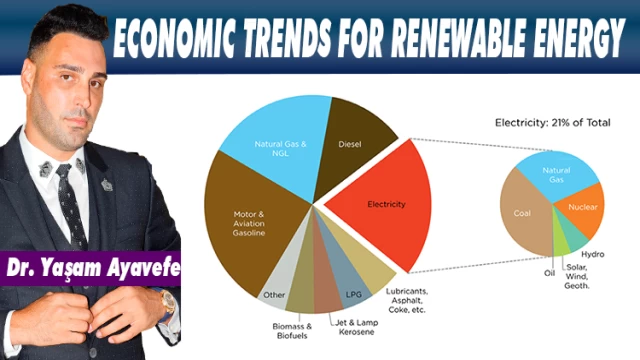The European Renewable Energy Observatory was established in France in 1979 with the support of the Intelligent Energy Europe program created by the European Commission.
The socio-economic data transmitted by Member States are based on the results of studies carried out at world or European level targeting one or the other renewable energy sector for each country to move forward.
Renewable energy includes forecasts of employment and activity. These data are transmitted annually.
According to the figures provided, the photovoltaic, wind, biofuel and solid biomass (wood) sectors account for the majority of employment and turnover in the renewable sector. This observation is also valid if we consider the European Union as a whole.
The leading group is also made up of France, Italy, Spain, the United Kingdom, Denmark and Sweden. However, these data should be examined with great care.
Indeed, they are the sum of a wide variety of different sources. Only France, Germany, Austria and Italy provide detailed socio-economic data from national studies published annually. The rest is just guesswork.
Direct jobs are jobs that result directly from the manufacture and supply of equipment and components for the renewable energy sectors, or from on-site installation, as well as operations and infrastructure.
Indirect jobs are jobs arising from the activities of sectors that supply materials or components used by renewable energy sectors.

However, it is not limited to these. The field of study here is therefore very broad, even very approximate. Only one country accounts for less than 20,500 FTEs for the photovoltaic sector and 39,850 jobs for renewable energy as a whole for the same reference year.
The federation of companies in the technology industry reports that in recent years around 13,000 jobs have been created for all renewable energy sectors, whether manufacturers of equipment and components used by the industry, or service providers.
The renewable energy sector is still thought to create employment. Even if statistics are lacking, for example, biomass, which is the source of most of the energy produced from renewable sources, is a complex sector that has led to the development of a number of new professions related to cogeneration techniques.
The development of renewable energy sources also ensures the sustainability of economic activities in sectors such as agriculture or agri-food.
Therefore, examining these different sources of information makes it possible to paint a brief picture of what renewables mean for employment.
However, it should be borne in mind that it is very difficult to assess the activity generated by the renewable energy sectors.

Some companies more broadly involved in the energy sector, construction or other areas have actually hired additional staff to meet the needs.
The demand is different when renewable energy generation is heavily subsidized by public authorities.
Thus, electricians and roofers can work in the photovoltaic sector without their sole activity. The same goes for the solar industry etc. This also applies to heating engineers working for
It covers the energy, construction, research and development sectors, etc. It is very difficult to isolate the share of renewables in the wider economic activity involving
Faced with a decline in subsidies in the photovoltaic sector, some companies have relinquished their activities to their core business, namely electricians, roofers.
SUPPORT MECHANISMS
Supporting renewable energies is a political choice that should benefit everyone. Although attempts were made from the early 2000s, things accelerated later on. There was a European mandate describing the implementation of the latest measures conducive to green energy production.
As part of this Climate-Energy package, Europe adopted a directive aimed at promoting the use of energy produced from renewable sources.
- First, reduce greenhouse gas emissions by 20% by 2030 compared to 1990;
- Second, to achieve 20% renewable energy in the final energy consumption of the European Union by 2020;
- Thirdly, it is necessary to reduce the energy consumption of the European Union by 20% compared to the projections of the European Commission on energy efficiency.
The first two targets are binding. This explains that supporting renewable energies will reduce greenhouse gas emissions in the medium term, increase energy supply security in each Member State, develop technology and innovation in this sector, and also create employment and regional development prospects.
According to these details, it is accepted that innovation and a competitive and sustainable policy in the field of energy make it possible to create economic growth.
In most cases, energy production from renewable sources depends on local or regional small and medium enterprises.
The growth and employment prospects offered by investments in energy generation from renewable resources at regional and local level are remarkable.
Dr.Yaşam Ayavefe




























Yorum Yazın